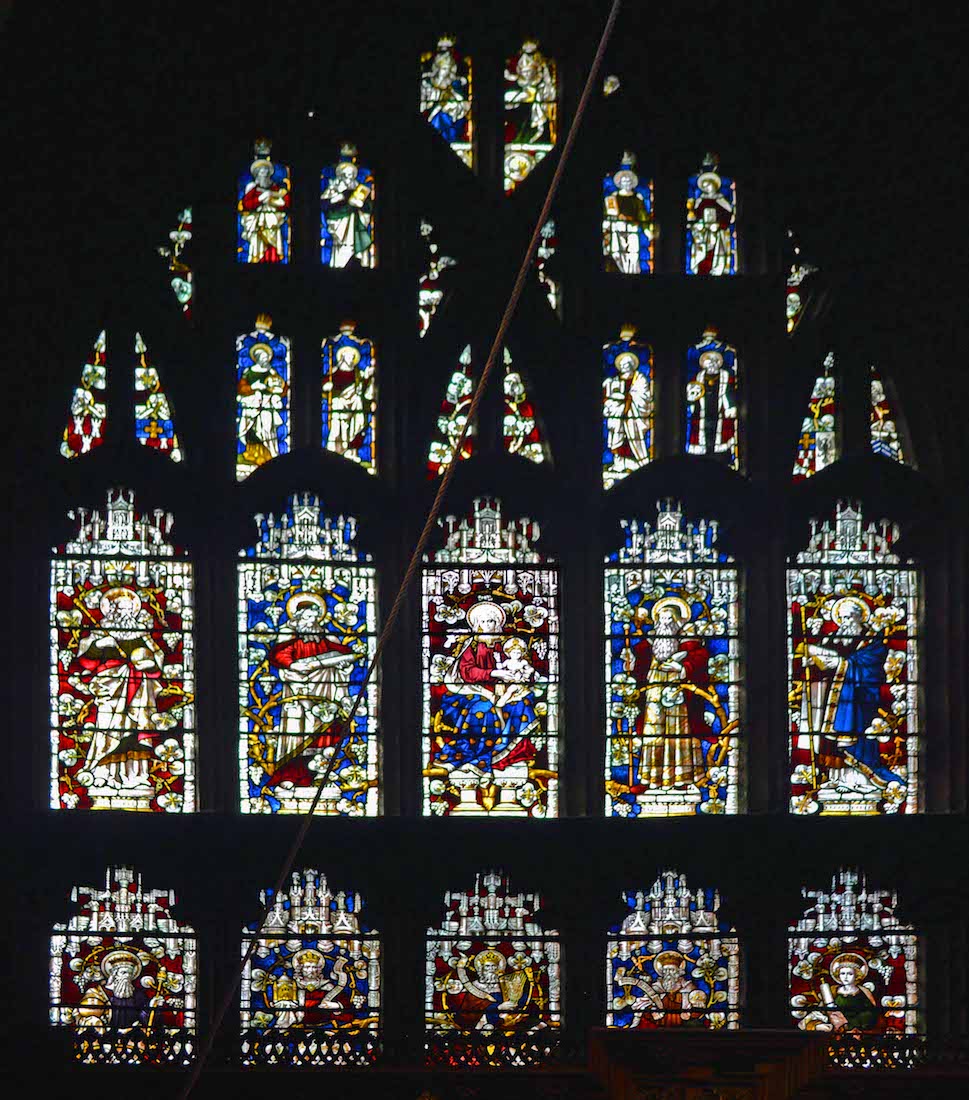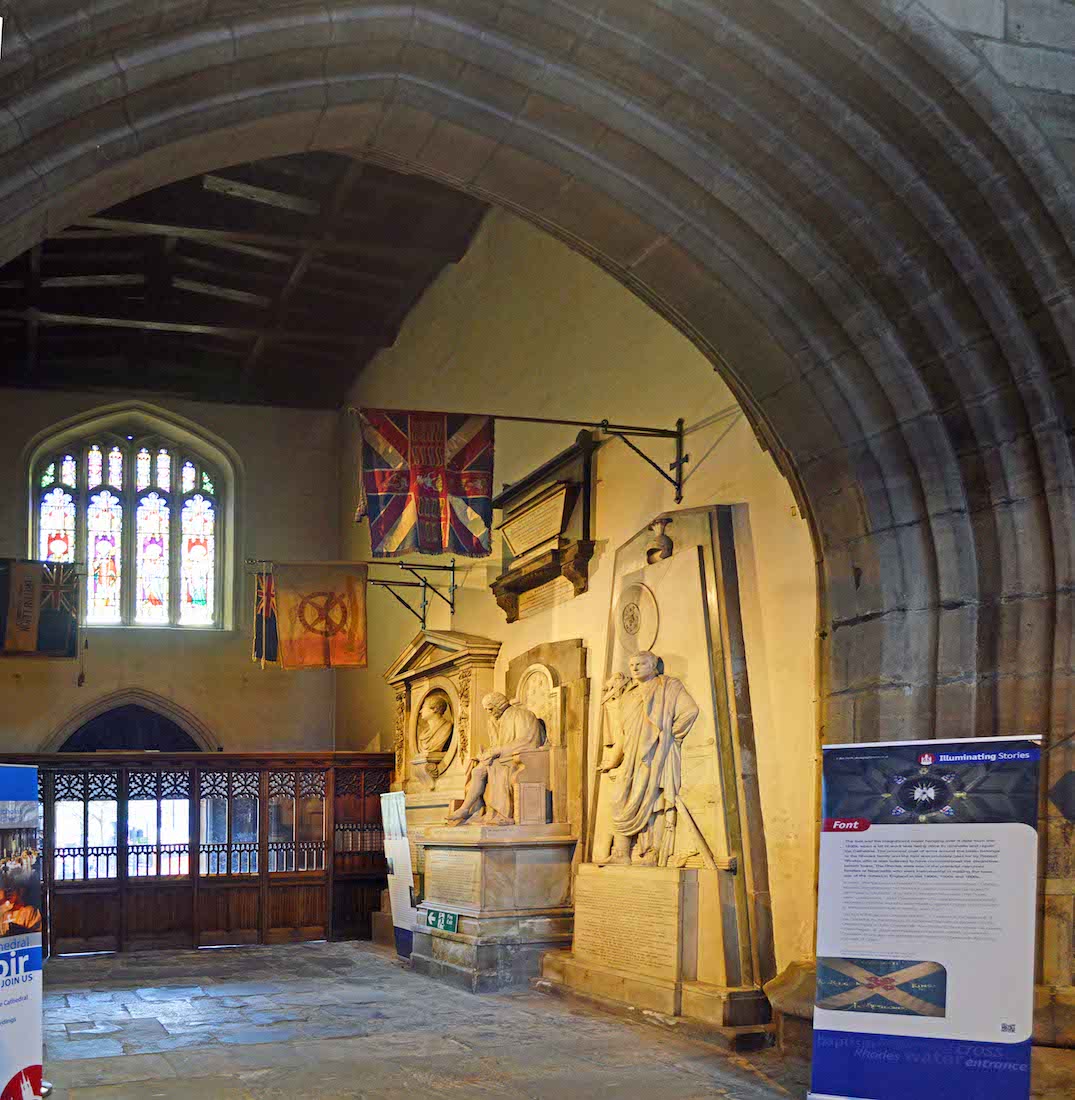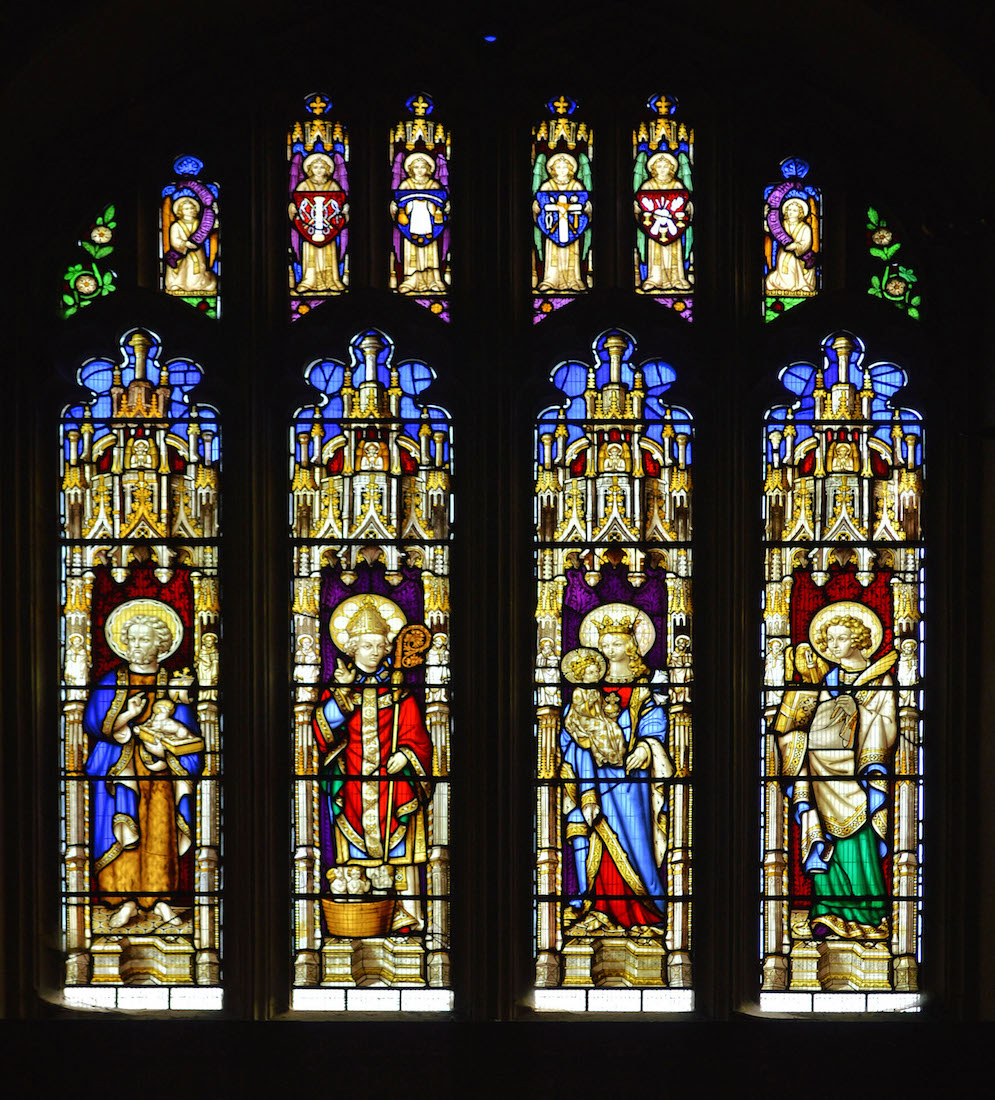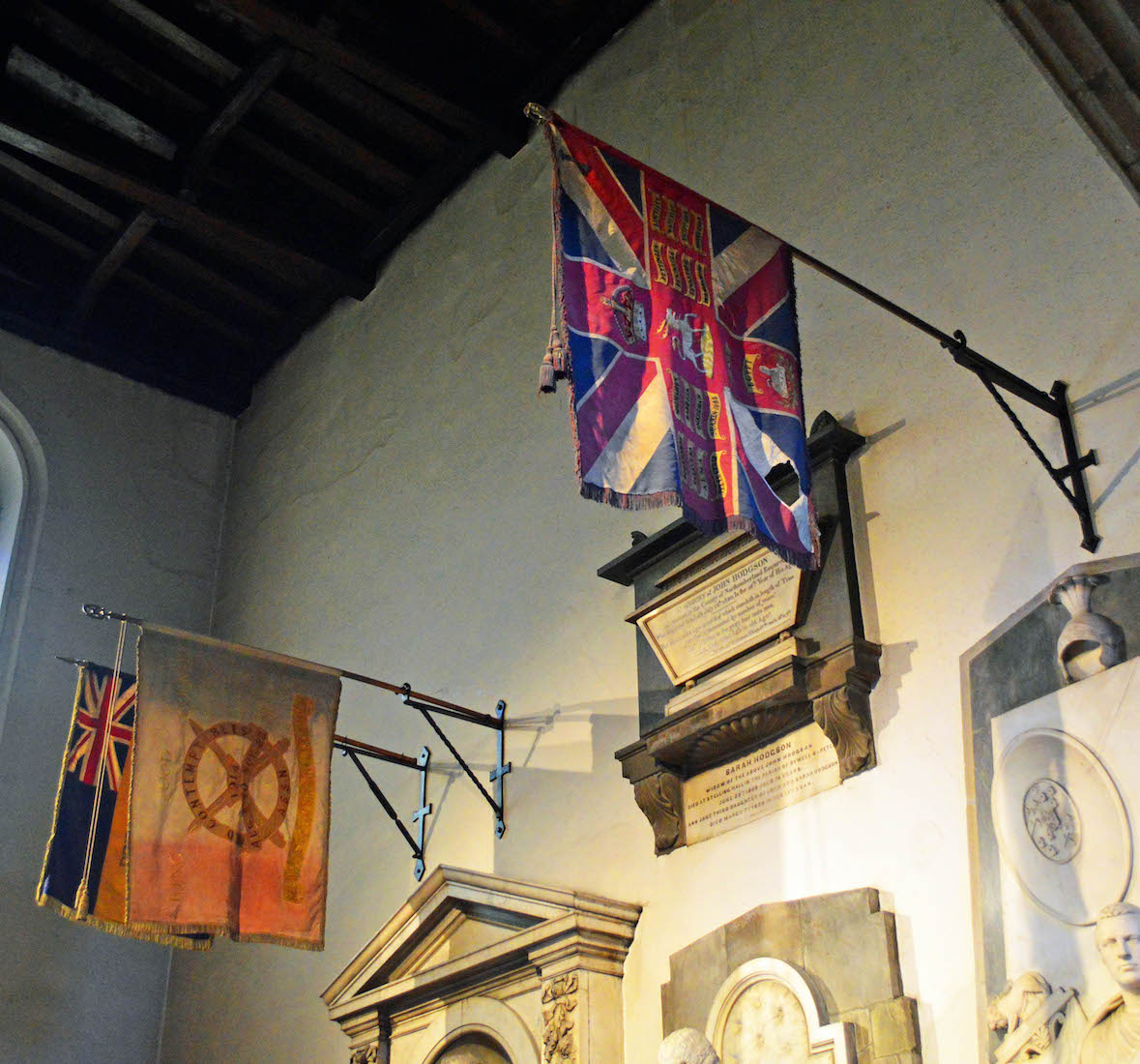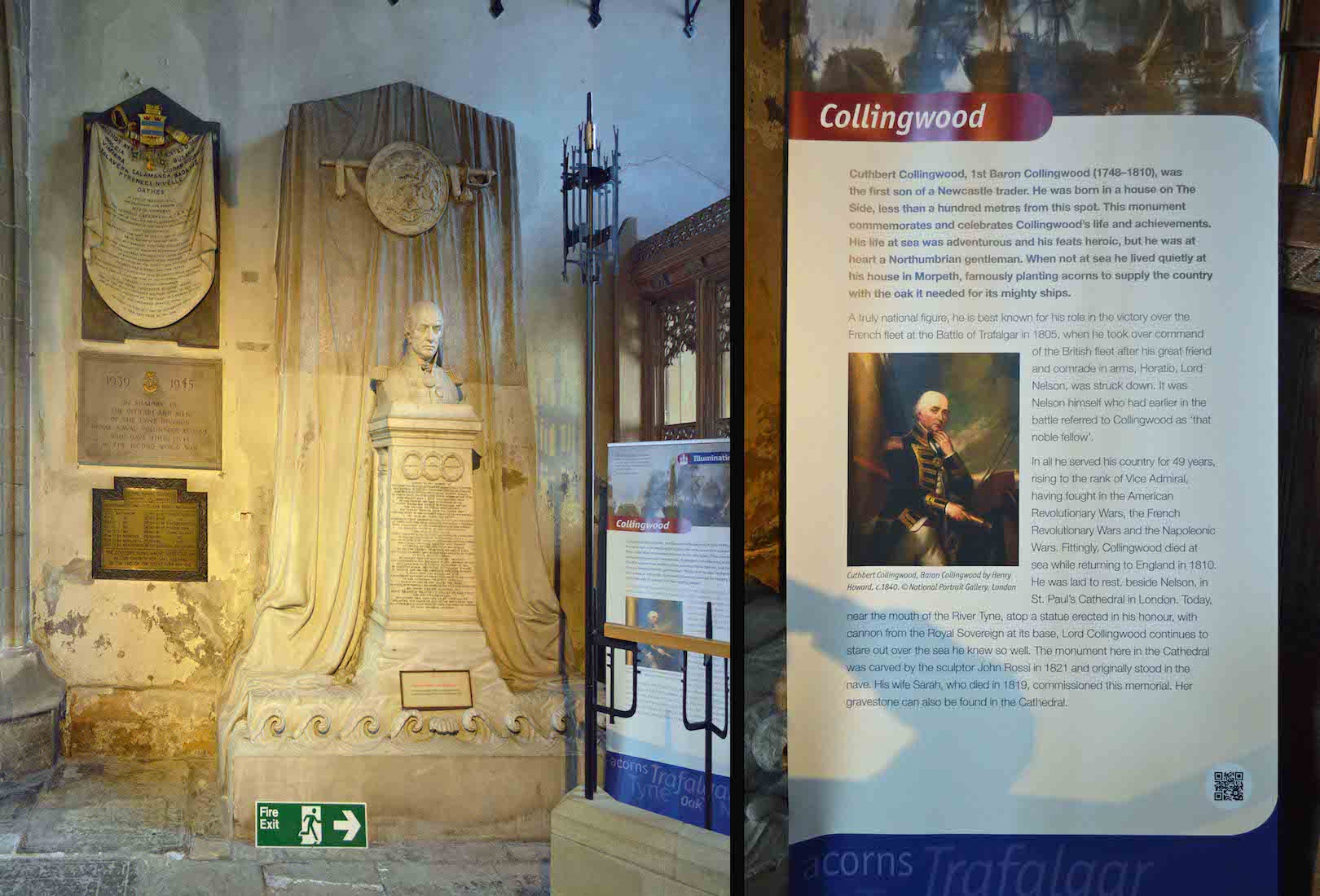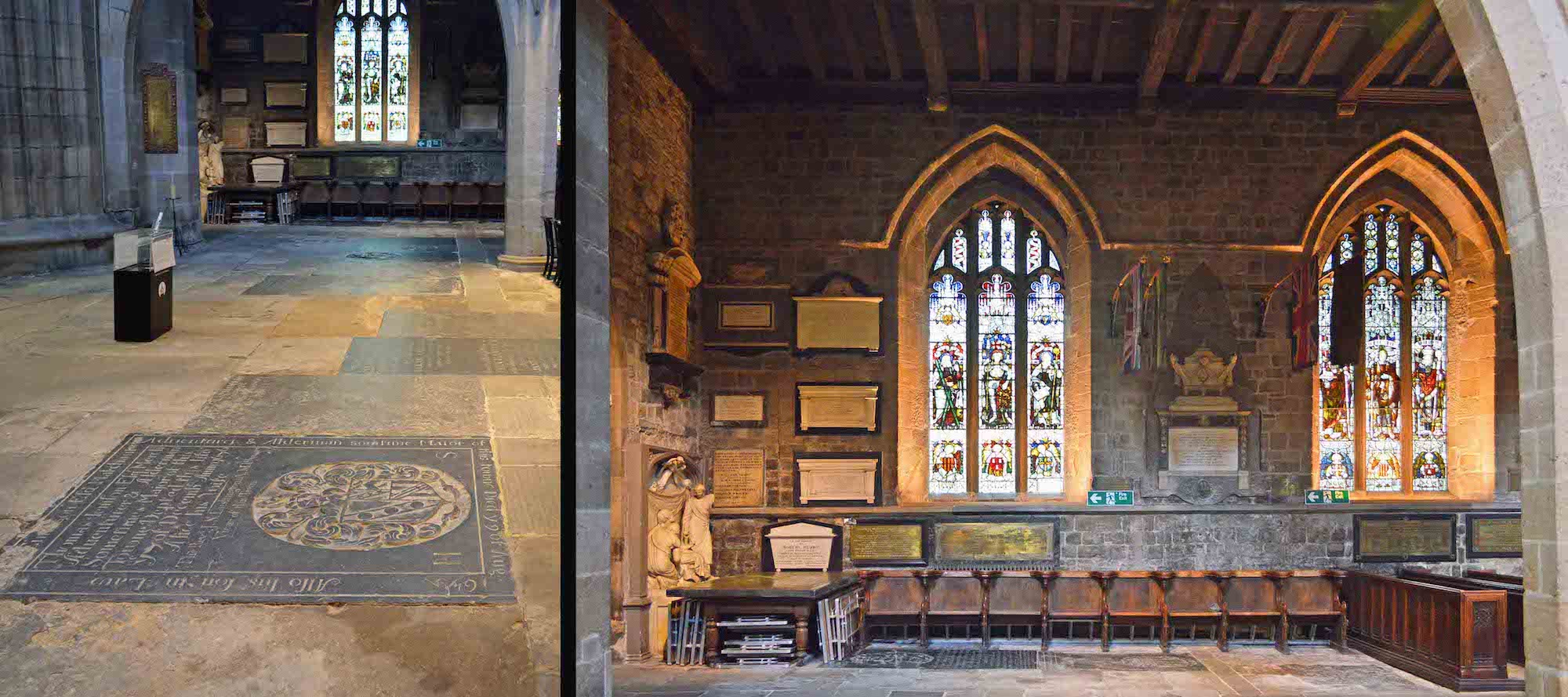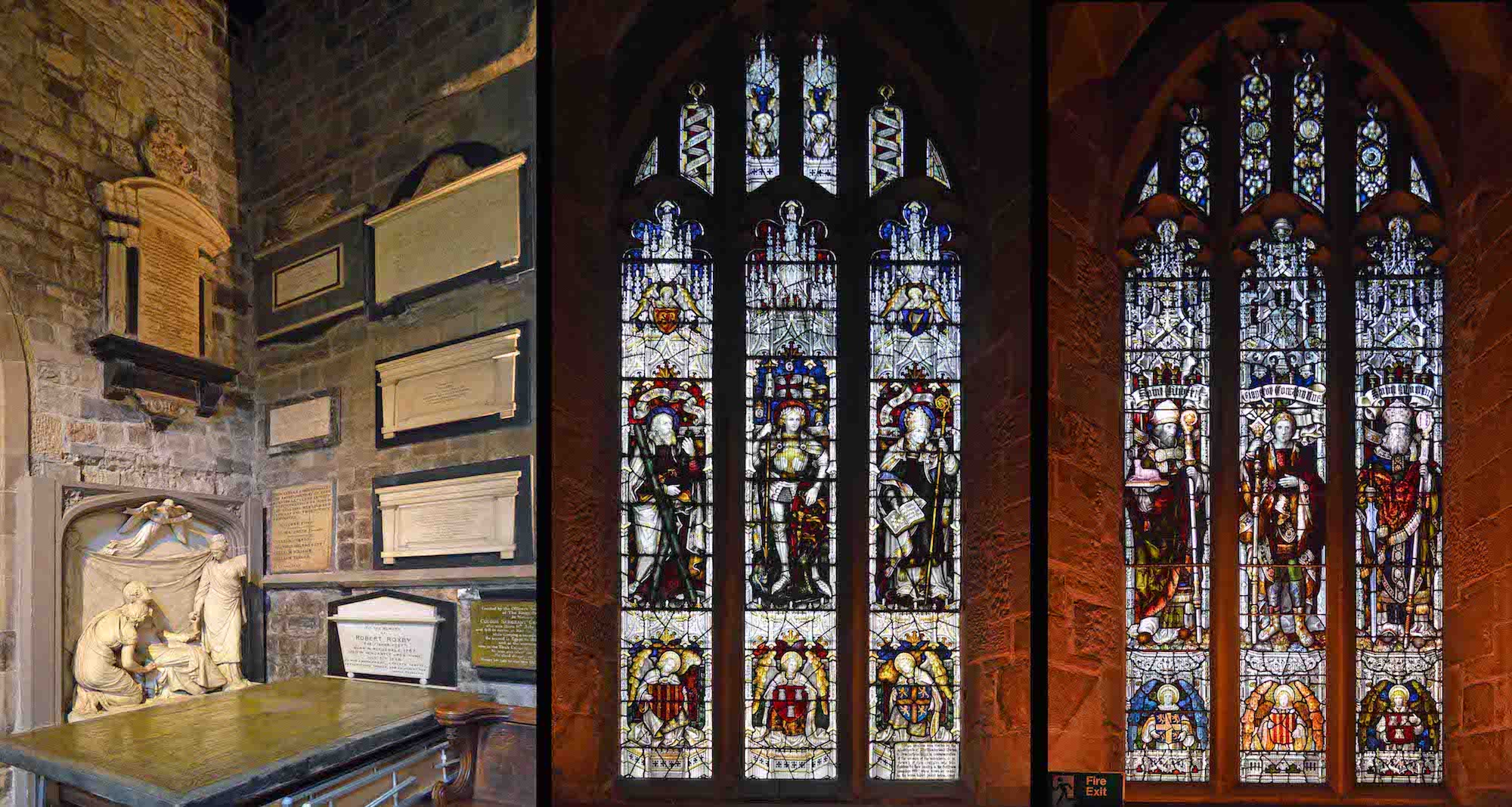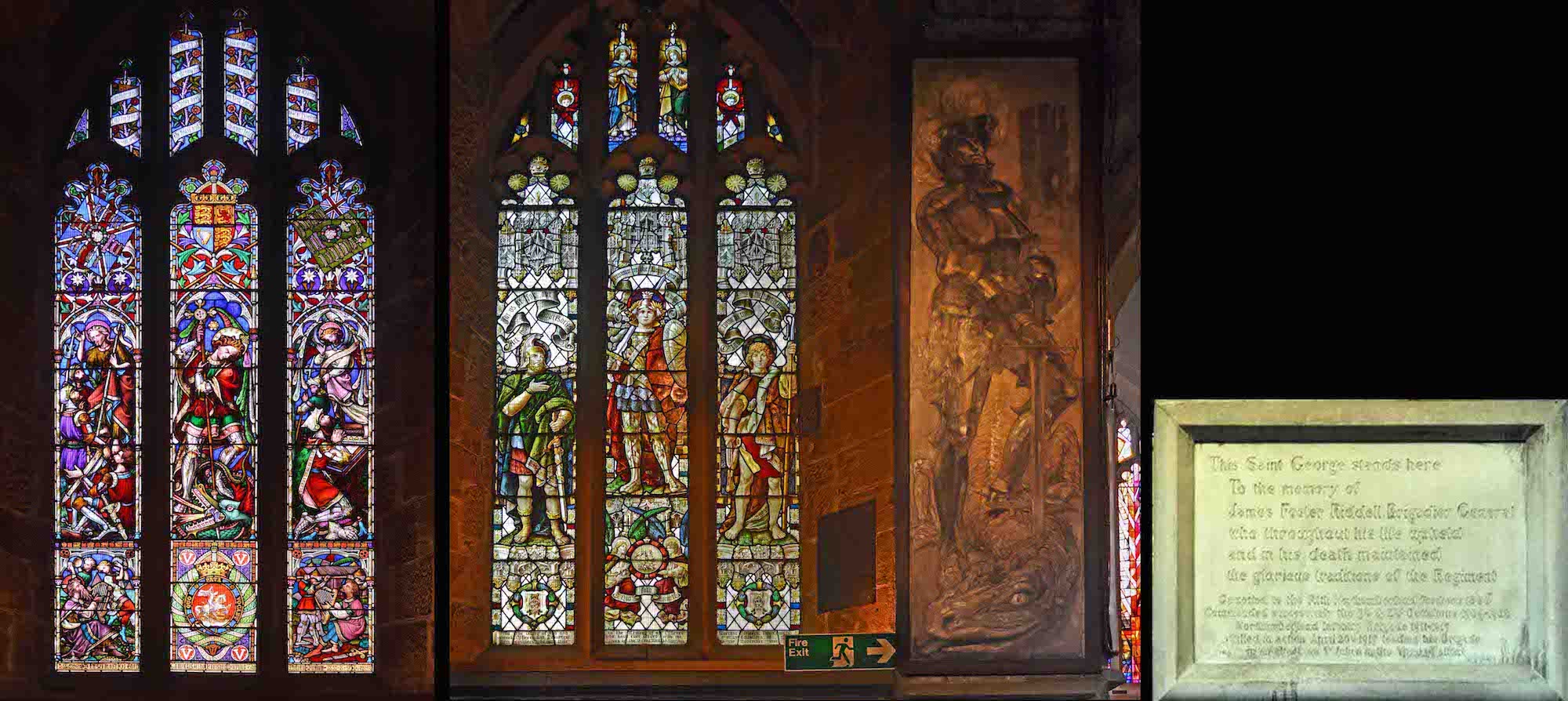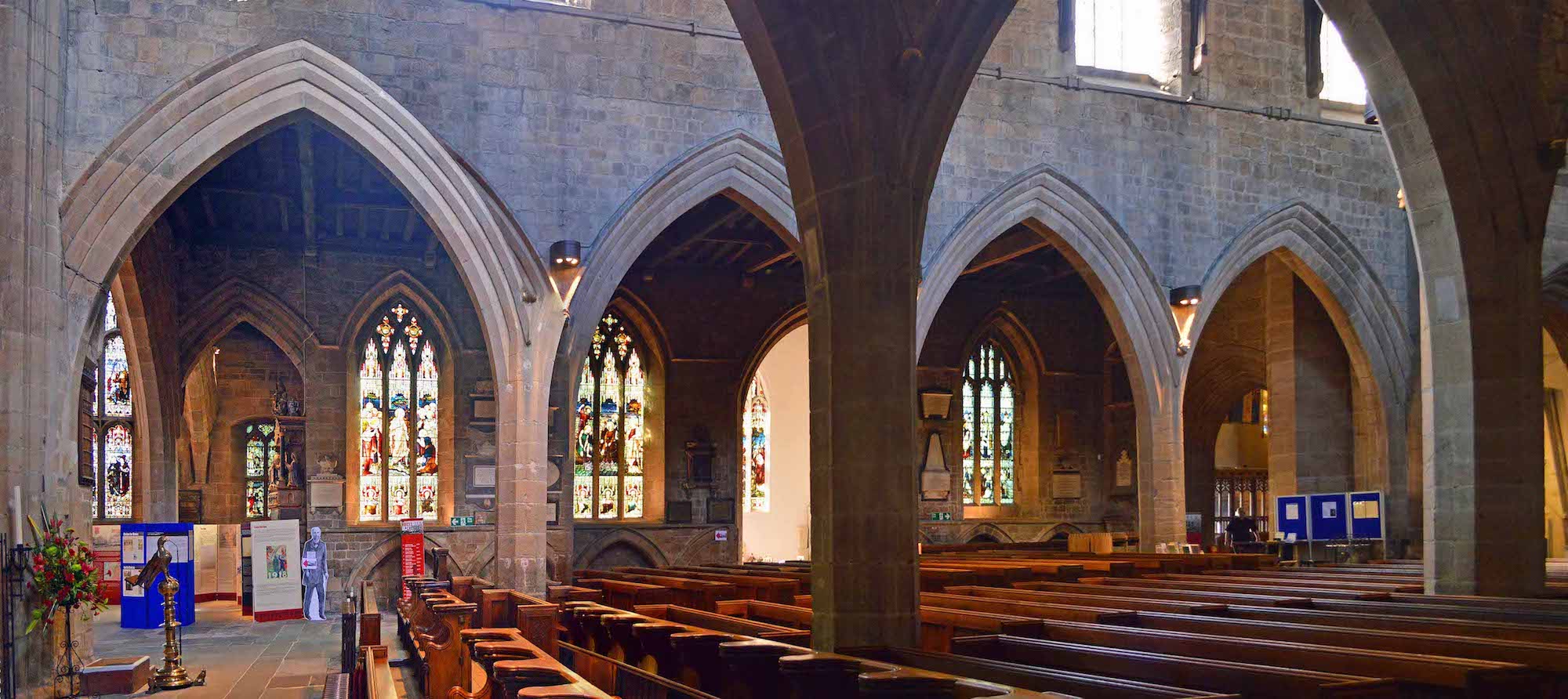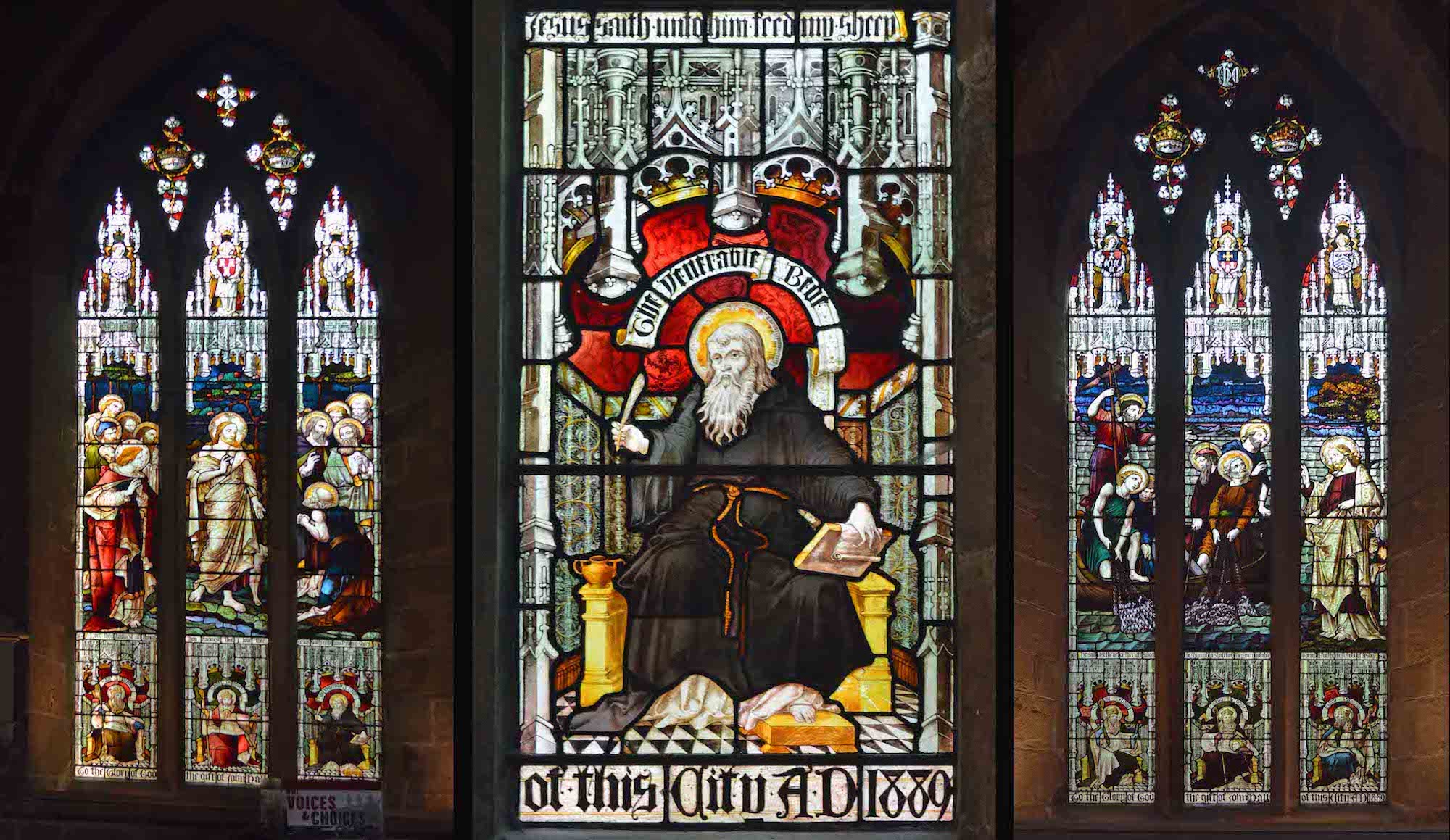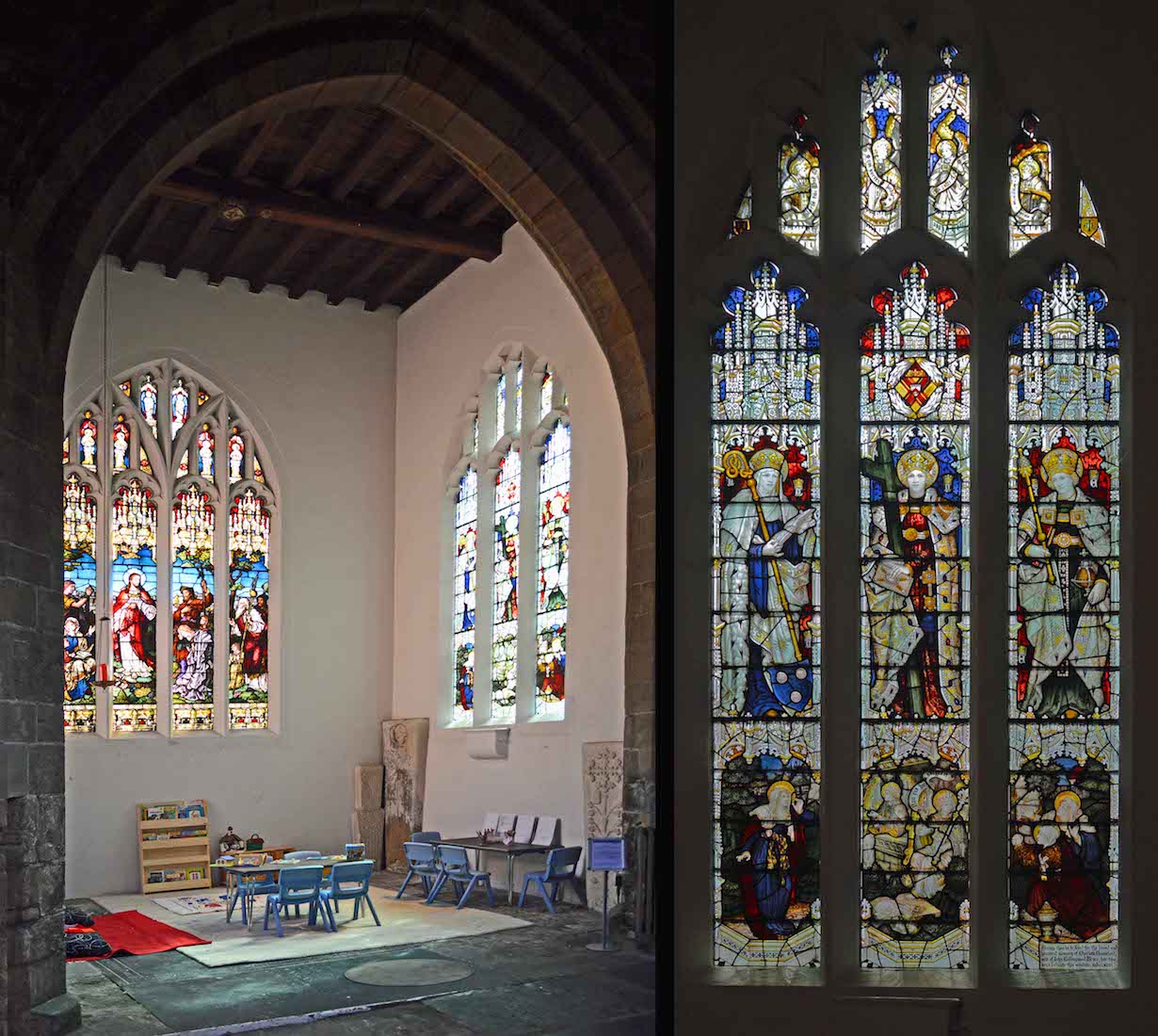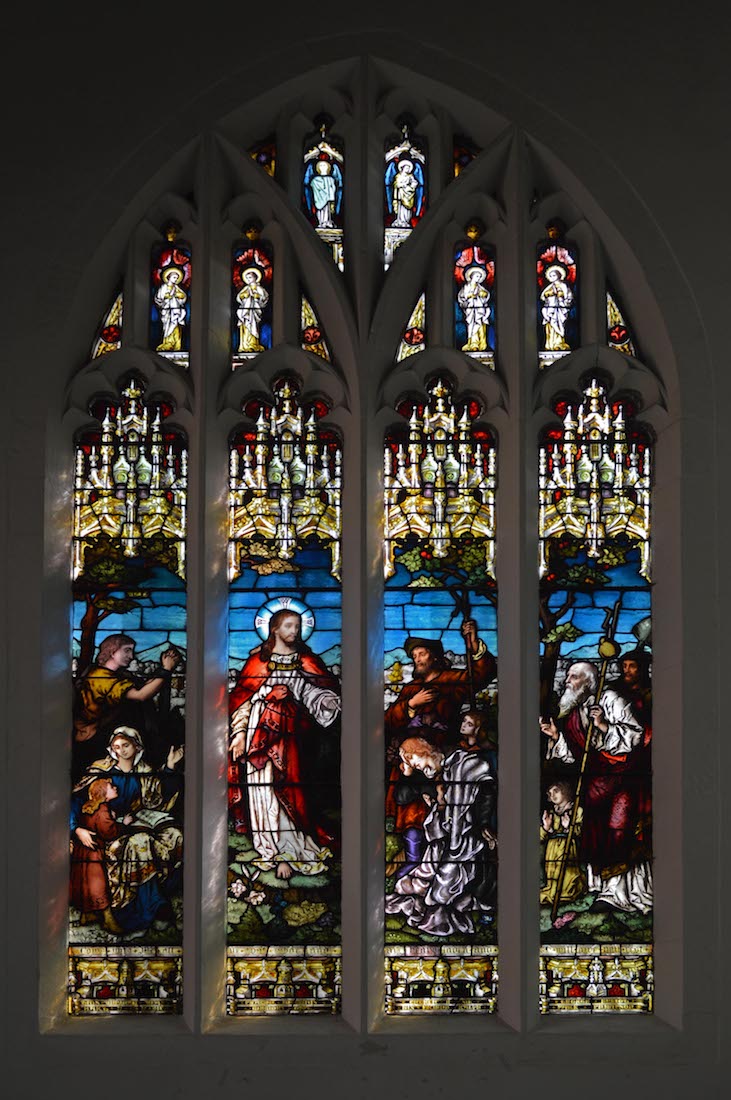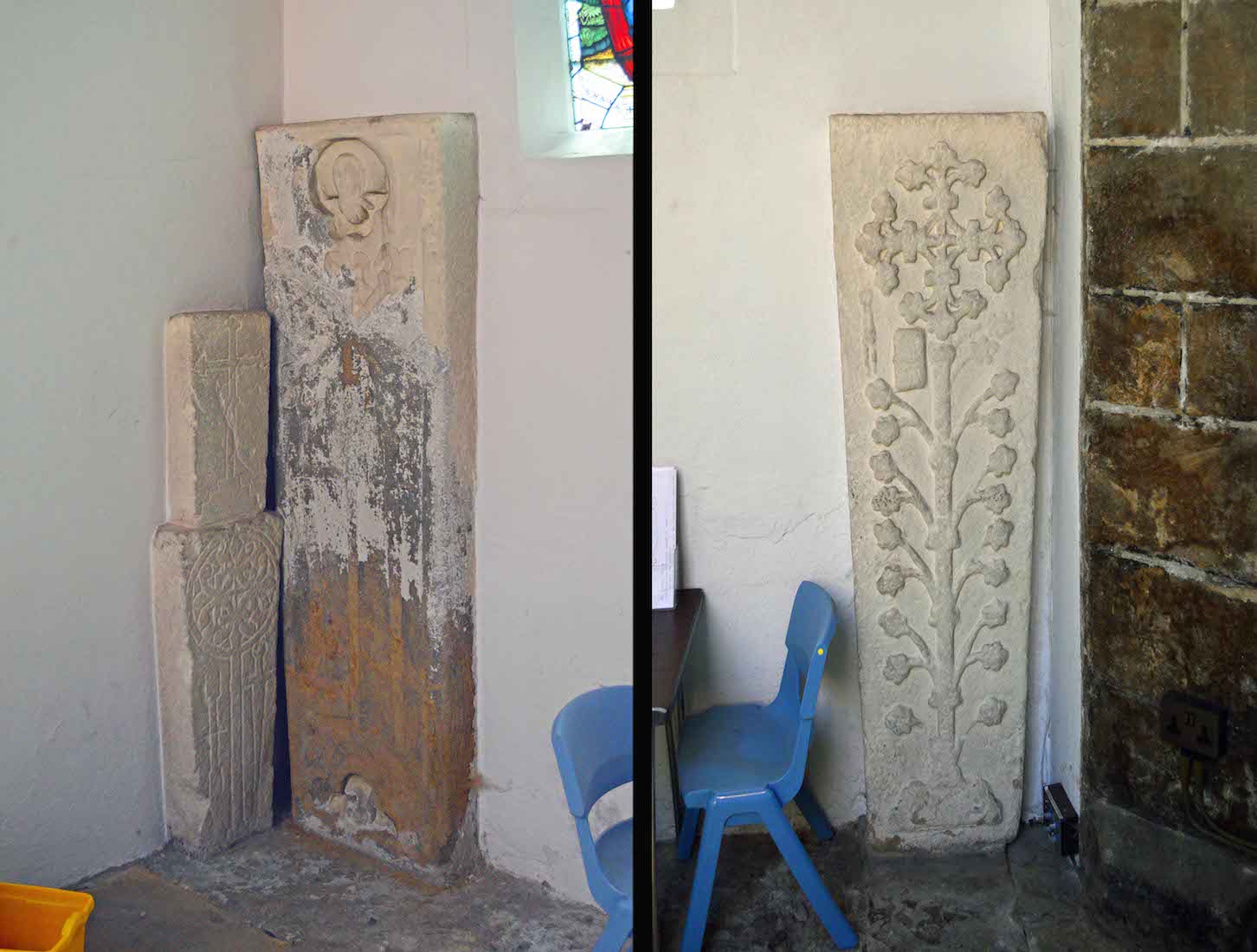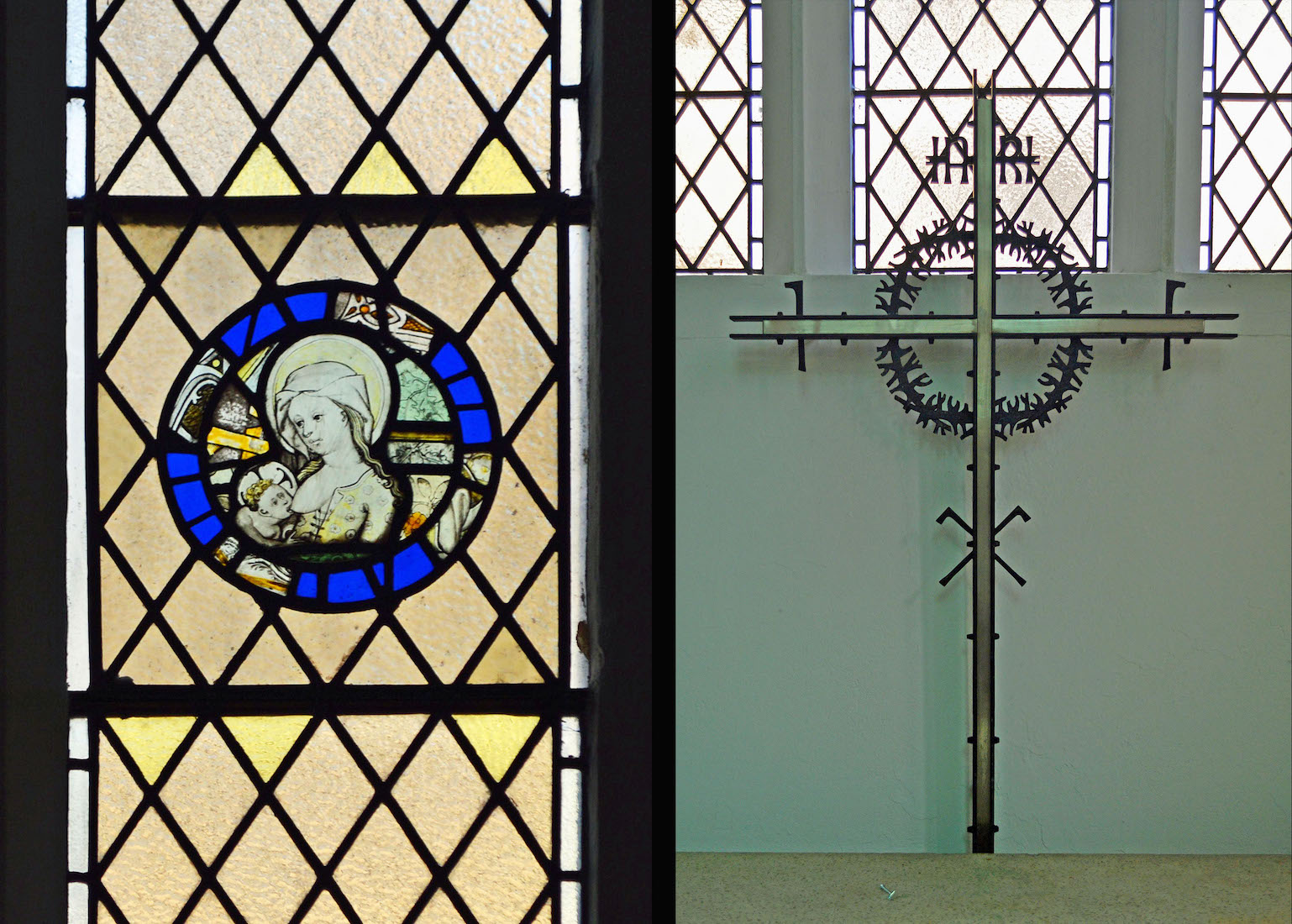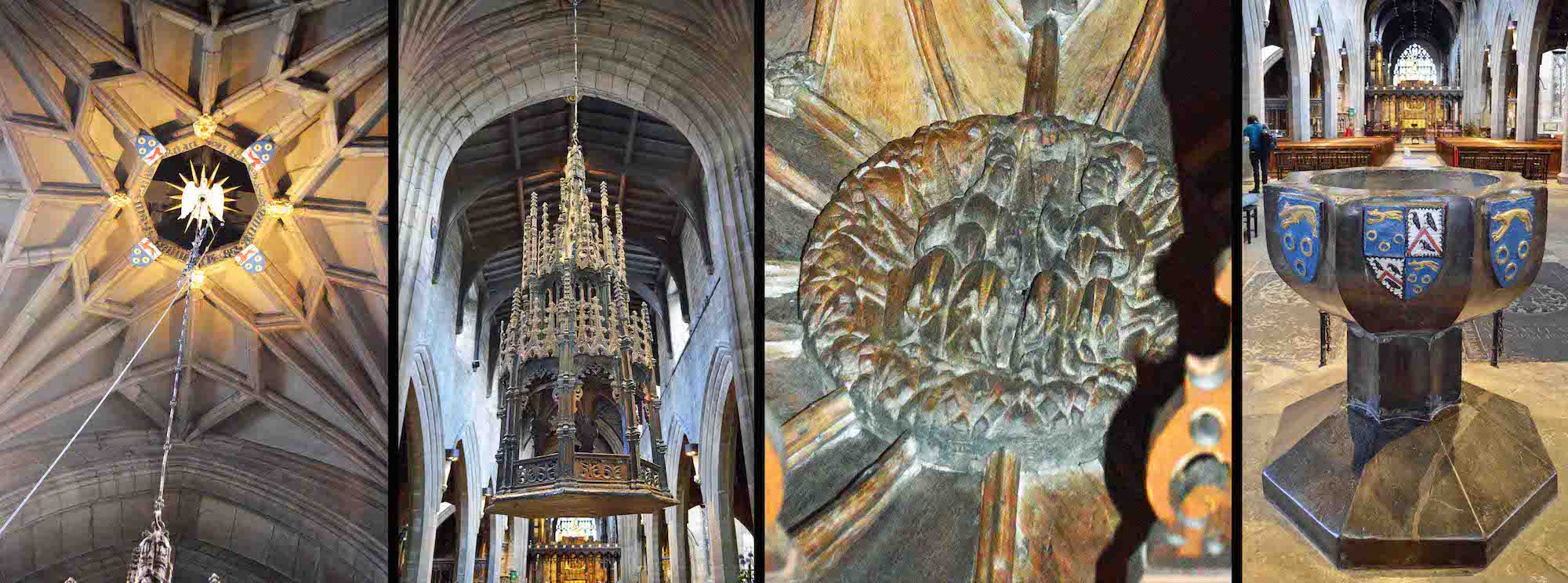
The octagonal marble stone font dates from the early 15th century. Each of the eight sides has a shield bearing a carved coat of arms (six associated with the Rhodes family). The 15th century oak cover is a beautifully and elaborately carved wooden canopy, with much Gothic tracery, gables, pinnacles, foliage and crockets in the design. There is a carved boss mounted inside the canopy depicting the Coronation of the Virgin. PLAN
22. WEST WALL PANELLING
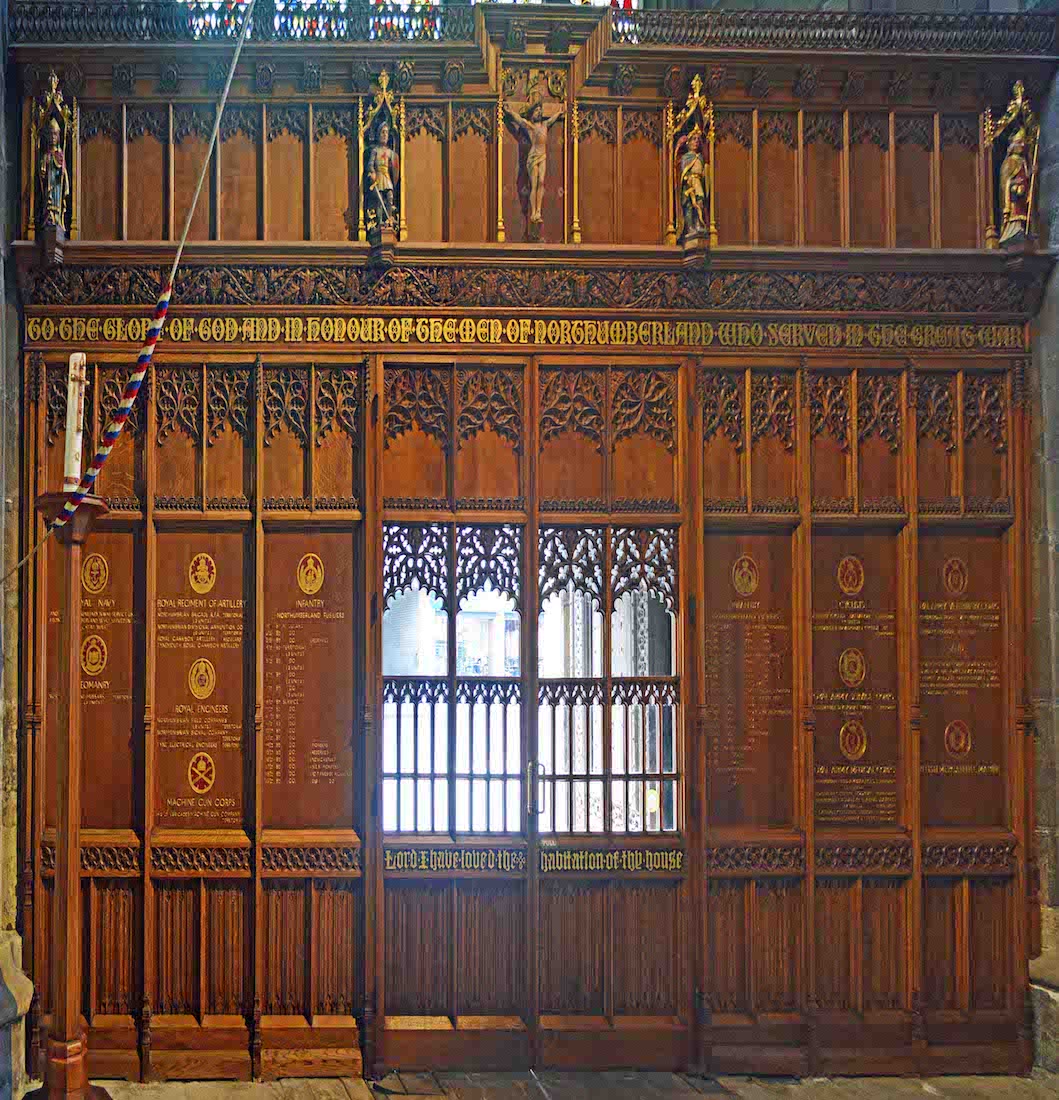
Across the West porch is a modern timber memorial screen topped by four brightly painted saints flanking a crucified Christ. A figure on the left depicts St George in full armour, whilst the one on furthest right is St Nicholas carrying his traditional three golden bags. The panels list the names of Northumberland men who died in the Great War.
23. WEST WINDOW
The West window is quite complex. There are five main panels, with five smaller panels below, unfortunately partly concealed from view by the screen. The subjects depicted are not labelled, although we can recognize the Madonna and Child in the central large panel, and presumably King David directly below.
24. SOUTHWEST TRANSEPT
The Cathedral literature identifies this Southwest porch as the Southwest transept. Through the arch we notice the old roof, the stained glass end window, the old hanging colours, and some impressive monuments on the West wall.
25. SOUTHWEST TRANSEPT WINDOW
This lovely window has four colourful main panels, again with no identification of the subjects! However, the third panel from the left shows the Virgin Mary holding the Baby Jesus, and the panel at right depicts St John the Evangelist, holding a quill, and with a golden eagle on his shoulder.
26. REGIMENTAL COLOURS
The Cathedral has the finest collection of ‘colours’ or regimental flags anywhere in the country outside London. The Cathedral is the ‘chapel’ of the Northumberland Fusiliers and when flags are renewed, the old ones are displayed in the cathedral in a special ‘laying up’ ceremony.
27. SOUTHWEST TRANSEPT MONUMENTS
These three large monuments are in memory of certain civic ‘worthies’ who lived in the early 19th century. James Archbold who died in 1849, held the position of Sheriff of Newcastle, Mayor, Alderman and Magistrate. Richard Hopper Williamson (died 1835) was the Town Recorder of Newcastle for 40 years, keeping records of civic and criminal trials. Matthew White Ridley (1745 – 1813) was Mayor of Newcastle, and MP for Newcastle.
28. NORTHWEST TRANSEPT
Turning to the North, we face the other Western transept. At left is the end of the memorial wall panelling with St Nicholas just appearing. The Western wall of the transept contains several more monuments, and further regimental colours hang above.
29. COLLINGWOOD MEMORIAL
The large monument here remembers Admiral Lord Collingwood, who was born on Side, Newcastle, and both baptised and married in the church. Arguably his finest moment at sea came when he took full control of the British fleet at the Battle of Trafalgar in 1805, steering the fleet to victory after Nelson had been mortally wounded. Collingwood is buried in St Paul’s Cathedral next to Lord Nelson.
30. ACROSS THE NAVE
Moving down the nave a little, we look across to the North wall. The floor is lined with grave stones. In fact, the Cathedral holds one of the largest collections of ledger stones (floor memorials) in the country. There are 136 and they date from between the 1560s and the 1800s. There are also many wall memorials in the Northwest corner.
31. MEMORIALS AND WINDOWS
One interesting memorial in this corner is to Robert Roxby (1767 – 1846), decribed as ‘The Fisher Poet’. Roxby was an English clerk by profession, and an angler, songwriter and poet. He died in Newcastle. The left window depicts three figures, including St Andrew at left and St George, centre. The right window shows St Hubert, Emperor Constantine and St Martin.
32. NORTH NAVE WALL
The nave of this Cathedral is remarkably short, and there are just four windows on the North side. We see the third and fourth windows here along with an immense number of plaques and memorials. In fact, in the Cathedral there are hundreds of these memorials to eminent individuals from the city. Many of these on the walls are to the city’s great and good who wanted to be seen here in life as well as in death.
33. NORTH NAVE WINDOWS AND PAINTING
These two windows are War Memorial windows, and at right is a very large painting of George and the Dragon which sits above a memorial to Brigadier James Foster Riddell who was killed in 1915 in the Second Battle of Ypres. The painting is by Dutch war cartoonist, Louis Raemaekers, who was commissioned to paint this iconic scene by Riddell’s widow. It was painted in 1922 and is one of the few paintings by Raemaekers outside Holland.
34. THE SOUTH NAVE
In this view across the nave, we note the clear clerestory windows, the many memorial plaques on the South wall, St Margaret’s Chapel at centre, and the openings to the South transept at left. The old fashioned pews are also notable for their shaped back supports.
35. SOUTH NAVE WINDOWS
Because of the opening to St Margaret’s Chapel, there are only three nave windows on the South side, and the Eastern two are shown here. The central panels of the left window show Jeus confronting Peter by the lake after the Resurrection. Below is a notable panel depicting the Venerable Bede (centre). In the right window, Jesus tells the disciples to cast their nets on the other side of their boat, and they draw in a great catch.
36. CHAPEL AND WINDOW
At left the arch opens to the St Margaret Chapel. At right is the remaining South nave window. In the lower panels, we see Joseph and Mary presenting Jesus to Simeon in the Temple. The larger panels above perhaps picture King David and two of his followers praising God.
38. CHAPEL SOUTH WINDOW
The panels of the South window show a dramatic picture of Jesus with the crowds. Beneath is the text: ‘Come unto me all you who are weary and heavy laden, and I will give you rest.’ (Matthew 11:28)
39. OLD GRAVE SLABS
In the corners of St Margaret’s Chapel stand several old stone panels looking for a place to belong! The more attractive medieval grave slab at right looks to have a cross in place of a flower at the top of a stem.
40. CHAPEL EAST WINDOW
Against the Eastern wall of St Margaret’s Chapel stands an unusual cross with crown of thorns – an interesting reminder of a Celtic cross. The windows on this side are mostly of plain diagonal lattice, but have a very interesting feature. The central panel contains the only known fragment of mediaeval stained glass in the cathedral, a beautiful roundel of the Madonna feeding the Christ Child. I was interested to discover online a number of paintings of the Virgin breastfeeding the Baby Jesus.


